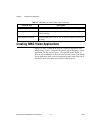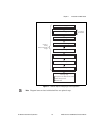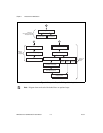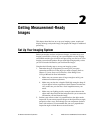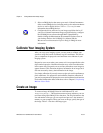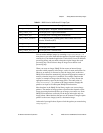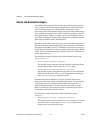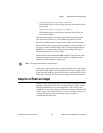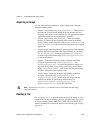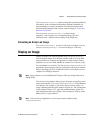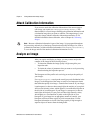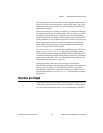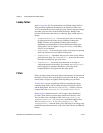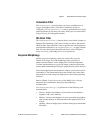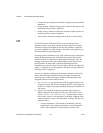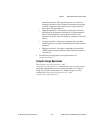
Chapter 2 Getting Measurement-Ready Images
IMAQ Vision for LabWindows/CVI User Manual 2-6 ni.com
Acquiring an Image
Use one of the following methods to acquire images with a National
Instruments IMAQ device.
• Acquire a single image using
imaqEasyAcquire(). When you call
this function, it initializes the IMAQ device and acquires the next
incoming video frame. Use this function for low-speed single capture
applications where ease of programming is essential.
• Acquire a single image using
imaqSnap(). When you call this
function, it acquires the next incoming video frame on an IMAQ
device you have already initialized using
imgInterfaceOpen() and
i
mgSessionOpen(). Use this function for high-speed single capture
applications.
• Acquire images continually through a grab acquisition. Grab functions
perform high-speed acquisitions that loop continually on one buffer.
Use
imaqSetupGrab() to start the acquisition. Use imaqGrab()
to return a copy of the current image. Use
imaqStopAcquisition()
to stop the acquisition.
• Acquire a fixed number of images using a sequence acquisition.
Set up the acquisition using
imaqSetupSequence(). Use
imaqStartAcquisition() to acquire the number of images you
requested during setup. If you want to acquire only certain images,
supply
imaqSetupSequence() with a table describing the number
of frames to skip after each acquired frame.
• Acquire images continually through a ringed buffer acquisition.
Set up the acquisition using
imaqSetupRing(). Use
imaqStartAcquisition() to start acquiring images into the
acquired ring buffer. To get an image from the ring, call
imaqExtractFromRing() or imaqCopyRing(). Use
imaqStopAcquisition() to stop the acquisition.
Note You must use imgClose() to release resources associated with the image
acquisition device.
Reading a File
Use imaqReadFile() to open and read data from a file stored on your
computer into the image reference. You can read from image files stored
in several standard formats: BMP, TIFF, JPEG, PNG, and AIPD. The
software automatically converts the pixels it reads into the type of image
you pass in.



